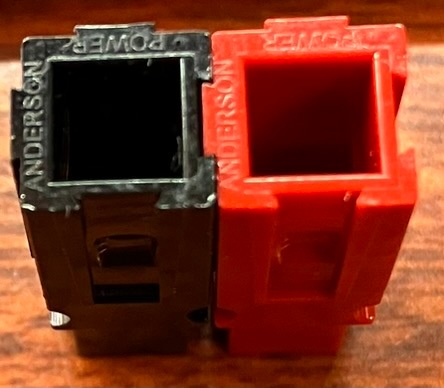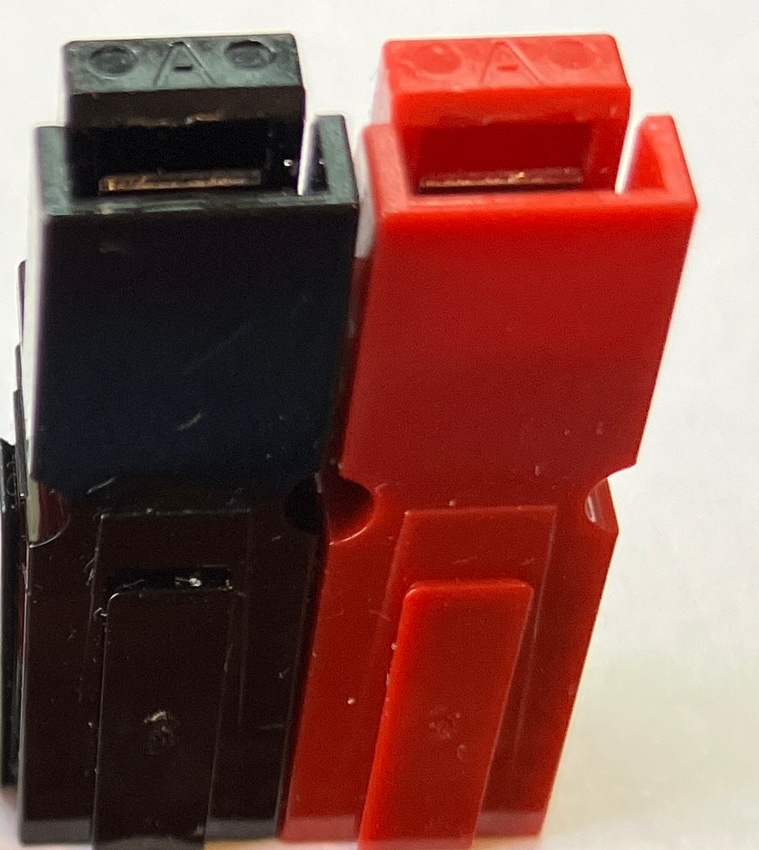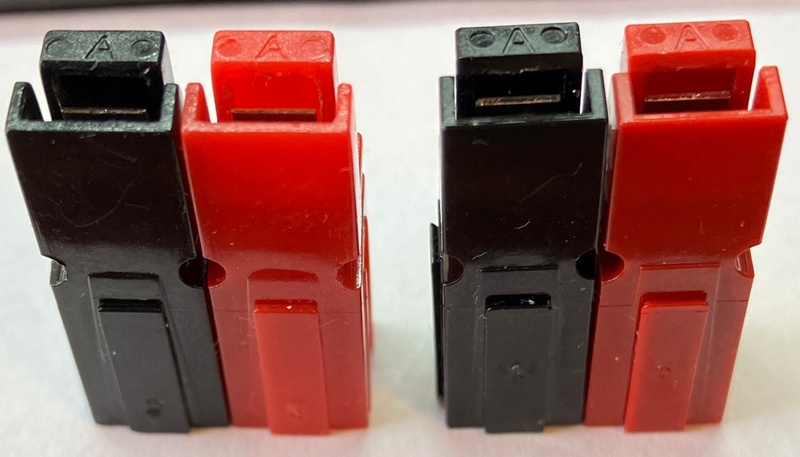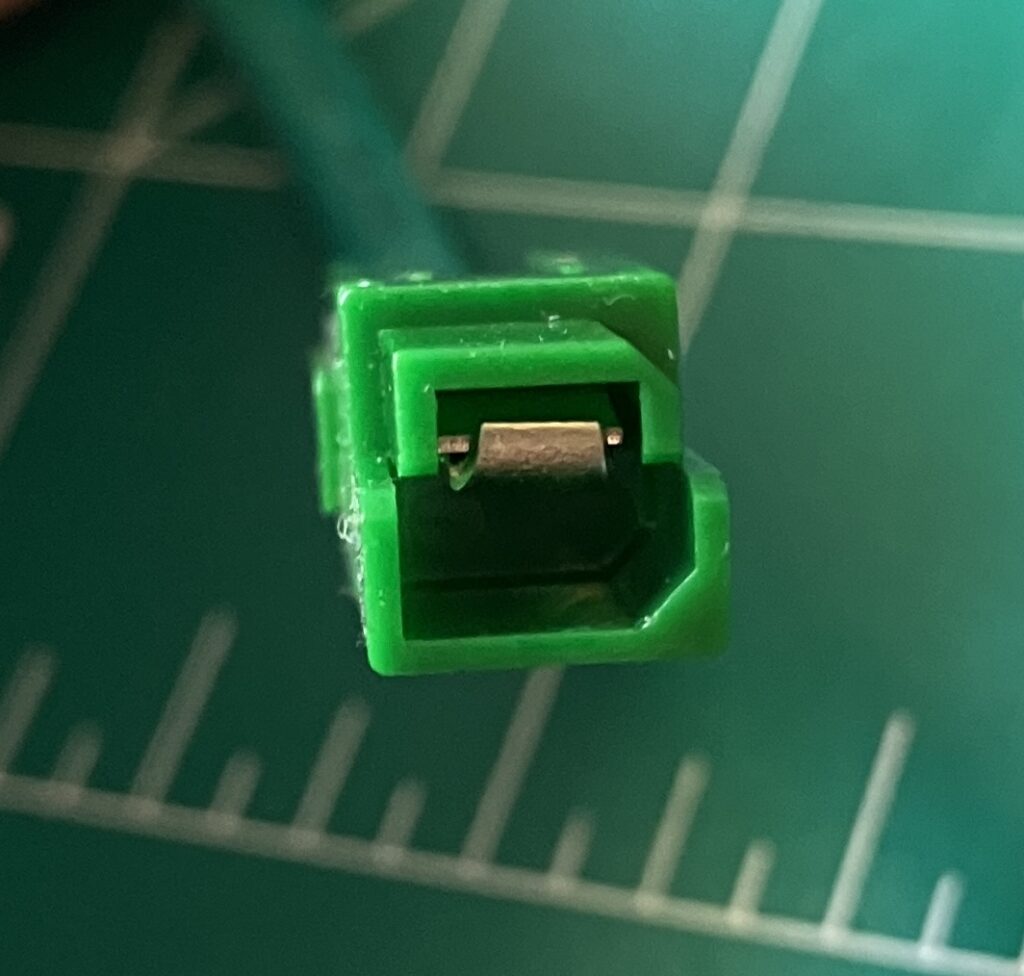In this article I will refer to any non-Anderson PowerPole style connectors as either fake or knockoffs. This is not a slight on any of the other manufacturers, but there are a lot of products out there trying to intentionally fool people into believing that their products are the same, and they are not.
Why does it matter if it is an Authentic Anderson PowerPole?
The short answer is, it may not. However, with an authentic Anderson PowerPole you have a quality guarantee of form, fit, and function. All of their products will work together, perform to the rated specifications, and last a long time if you don’t abuse them. With the knockoffs, you don’t have that guarantee of form, fit, and function. I have had knockoffs that would not fit properly with authentic Anderson PowerPole connectors, or even other knockoff brands. I have seen inferior finishes on the contacts that won’t last, and I have seen knockoff connectors that don’t even fit each other properly on the locking dovetails. I had one set that I didn’t think I would ever get back apart once I joined them side-by-side. I haven’t had any of these issues with the Anderson brand. For no more than you will “save”, I will take the Anderson any day of the week.
What does an authentic Anderson PowerPole look like?
The best way to know if “PowerPole” connectors are real, is to look at the rear of the plug. An authentic Anderson PowerPole will have their name on it on the rear, and it will say Anderson Power. If that isn’t there, it isn’t authentic.

Other ways to tell
There are potentially some other ways to tell if you are not able to see the rear of the plug, but they are not as reliable. First, if there is no uppercase A on the tip, it is not an Anderson PowerPole connector. You can also look for the distinct shade of red that Anderson uses. This is not easy to show, since different monitors will display colors differently. I would describe Anderson’s red as a darker red or “blood red”, not a “bright red” or “fire engine red”. Most fakes on the market use a bright red plastic. Look at some of the side-by-side comparison pictures below to see the shade difference. Another way is to see if the circular dents on the tip on each side of the A are deep and well defined, as shown below on authentic PowerPole connectors (easier to see on the black connector). Many fakes will use a name that starts with an A so they can put an A on the tip as well, but their molding tends to be more shallow and not well-defined like a real Anderson.

How to spot a fake
As mentioned before, if there is no uppercase A on the tip, it is not an Anderson PowerPole connector. The A on the front should have 2 WELL DEFINED circles, one on each side of it. If the circles are not crisp, or do not have some depth to them, it is likely a fake.
The rear of the connector should say Anderson on one side, and Power on the adjoining side.
Looking at the bottom of the connector, you should see an injection molding artifact (small blemish) in the MIDDLE of the connecting portion on real Anderson PowerPoles (shown on the right set) whereas the fakes tend to have that mark closer to the rear (shown on the left set).


On the sets above, notice that the circles on either side of the A are deeper an better defined on the authentic Anderson PowerPoles on the right, than on the knock-offs on the left (easier to see in this picture on the black connectors).
Consider the Source
Lastly, consider the price and the source. If it is someone like HRO, DX Engineering, Gigaparts, R&L Electronics, etc.… you can pretty much guarantee it is real.
If the price is too low, it’s probably fake. As of early 2025 they average around $1.65 or more per complete set (red and black housings and a contact for each). Always buy from a trusted source like Amazon.
Where to buy and order numbers
Red Housing – The part number is 1327FP for a retail packaged single housing, or 1327FP-BK for bulk packaged.
Black Housing – The part number is 12327G6 for retail packaged single housing, or 1327G6FP-BK for bulk packaged.
Green Housing (keyed) – The part number is 1827G1 or 1827G1-BK for bulk. This housing is keyed so that it cannot plug into the standard housings, and vice-versa. I use this housing for my ground wires for safety reasons.

10 Gauge Contacts – 261G2-LP or 261G2-LPBK for bulk packaging
12 to14 Gauge Contacts – 1331 or 1331-BK for bulk packaging
16 to 20 Gauge Contacts – 1332 or 1332-BK for bulk packaging
You will generally save money buying the bulk (BK) packaging since that allows the distributer to buy in bulk (hundreds or thousands) and repackage the pieces to pass on the savings.
As of the writing of this article in early 2025, the cheapest I have found the bulk packaged housings are $0.63 each (1 single housing of 1 color) for quantities below 25, and $0.50 each when ordering 25 or more.
This deal on Amazon for 12 sets, including contacts is the best deal I have seen anywhere, and it is linked below. It does not come with boots, or roll pins, but it does come with 12 complete sets of Red/Black and 2 silver plated contacts for 30A 12-16 AWG.
The roll pin size you need to secure these to one another, so they don’t slide apart is a 3/32” wide by 1/4” long roll pin. These can be easily found on Amazon in a quantity of 45. Whatever you do, don’t buy roll pins from Harbor Freight. They are junk in my opinion.
If you like to have boots/sleeves on your PowerPoles, check out the link below. I like these, but they do not have a hole in the tip. I generally use a leather punch to make the hole, but you can also just slice across the tip to make a slit for the wire to come through, or take your chances cutting some of the tip off to make the hole. I don’t generally use sleeves since I have encountered several instances where you cannot get the connector to fit while using a sleeve and had to slide it back to make the connection. Like if you try to put 2 sets on top of one another, or next to one another in some of the original Anderson connector holders, the boots would get in the way since there was no gap left for this. Some of the newer fixtures take this into account, but in general, boots aren’t needed.
Product Links
12 complete sets of Anderson PowerPoles
Roll pins for PowerPoles
Boots/Sleeves for PowerPoles (no hole in tip)
